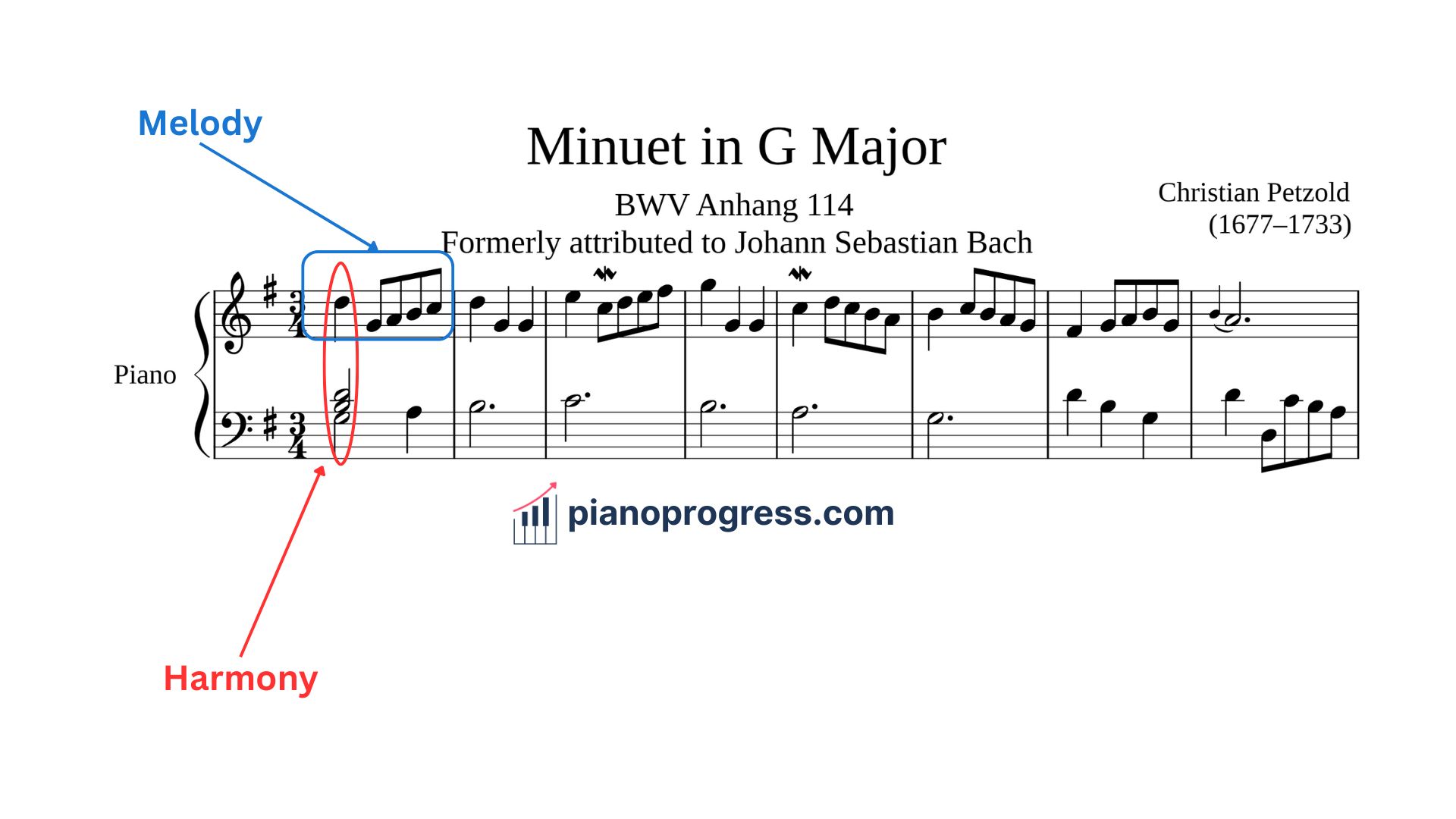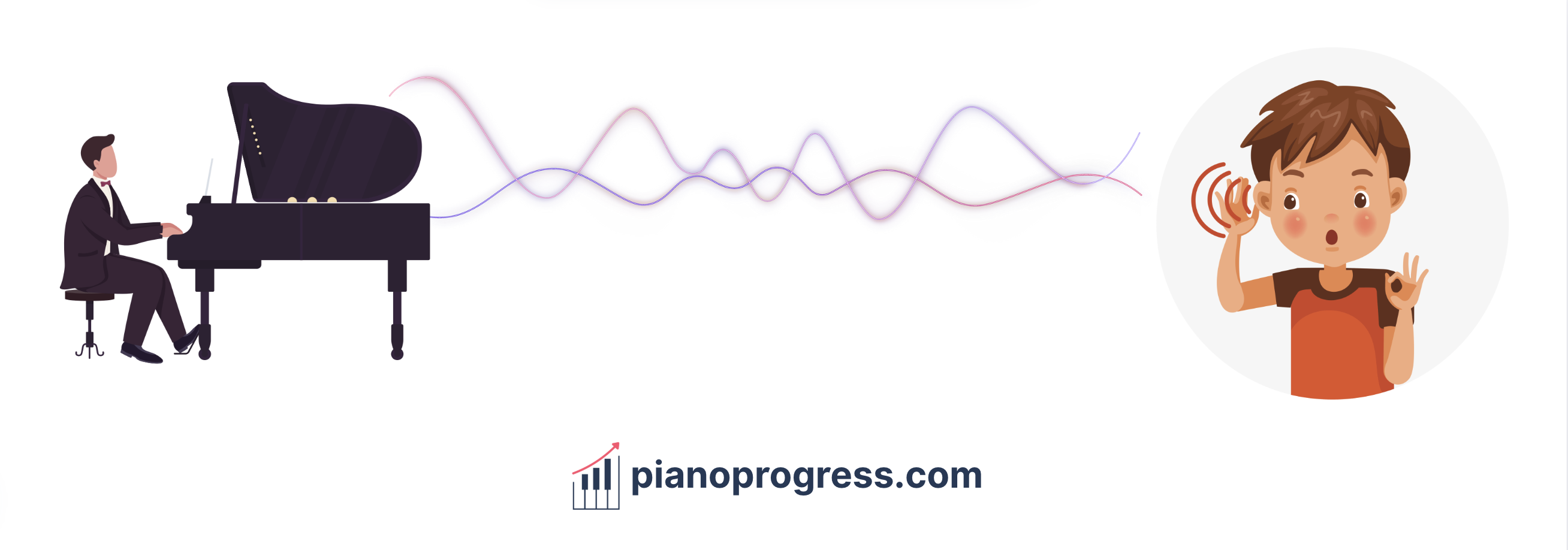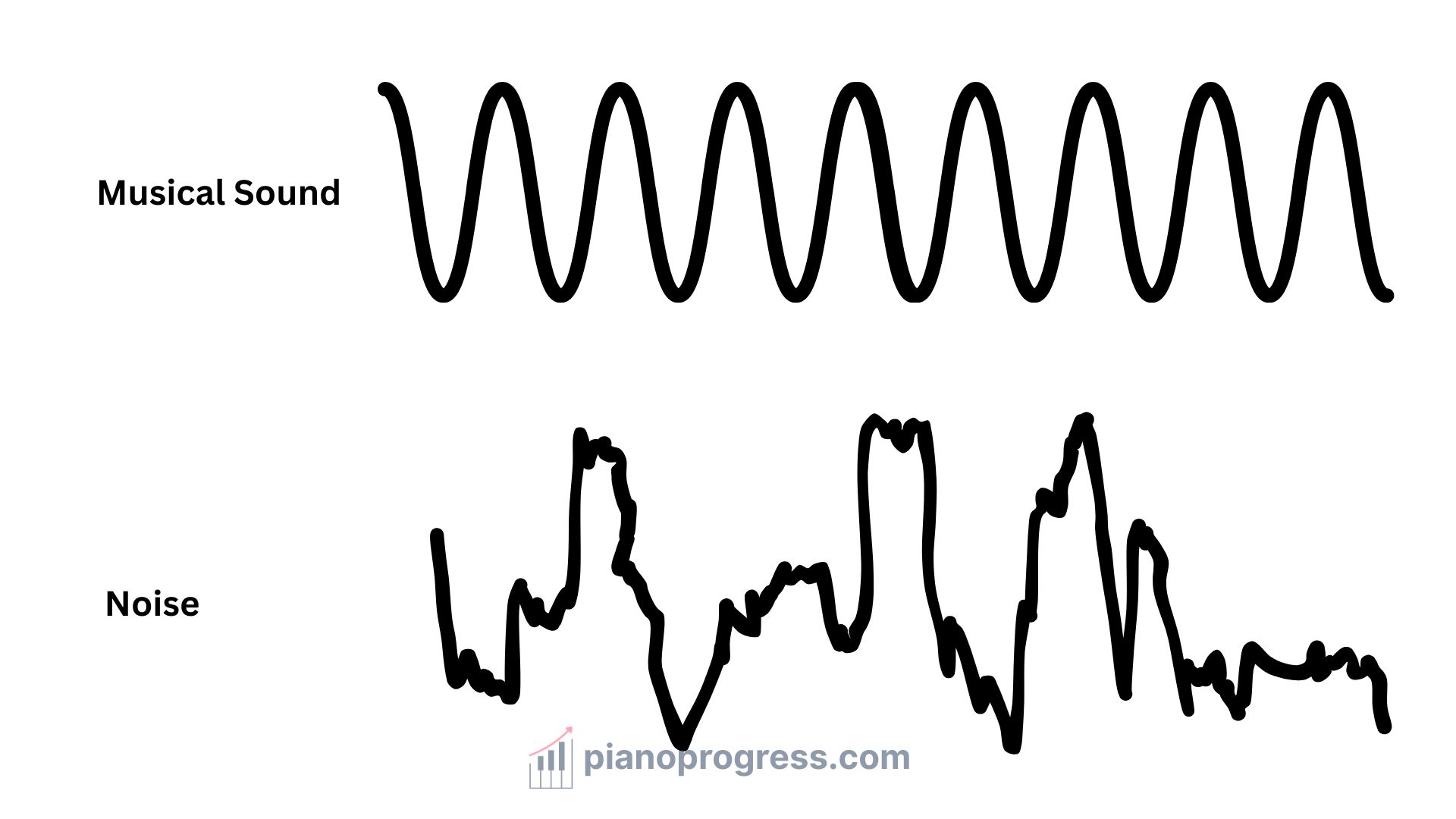
Why bother with theory when you “just want to play”?
If you’re serious about progressing at the piano, there comes a point when extra scales and YouTube tutorials stop giving you all the answers. Understanding why music sounds the way it does—its internal logic—accelerates everything: sight‑reading, memorisation, phrasing, improvisation, even your enjoyment of your favourite recordings.
That journey starts with the very basics: What is music? What is a musical sound? This post unpacks those foundations so you can understand the characteristics of music, and build a rock‑solid technique and musicianship.
What is music?
At its simplest, music is the art of combining sounds successively and simultaneously, in an ordered and proportionate way over time. We can break that definition into four interacting components:
| Component (horizontal/vertical) | What it means | Example at the piano |
|---|---|---|
| Melody (horizontal) | A sequence of single notes | The right‑hand tune in Beethoven’s “Für Elise” |
| Harmony (vertical) | Notes sounding together | A C‑major chord supporting that melody |
| Counterpoint | Two or more independent melodies at once | Bach’s Invention No. 1 |
| Rhythm | The pattern of durations and accents | The swung eighths of a jazz standard |

What is sound?
All music is built from sounds. A sound is a phenomenon that occurs whenever an elastic body vibrates. This vibration moves the surrounding air, generating sound waves that propagate in all directions.
When these waves reach the membrane of our eardrum, they cause it to vibrate, creating nerve impulses that travel to the brain, where they are interpreted as sounds.

The origin of every sound is therefore the vibration of a body that sets the nearby air in motion.
A regular vibration produces sounds with a definite pitch, known as musical notes—pleasant to the human ear, like the tone of a piano or a guitar.
An irregular vibration produces sounds with no definite pitch, which we perceive as less agreeable. These are noises, such as the roar of a car, an aeroplane, or an engine.

Characteristics of musical sound
The main characteristics of sound are:
- Pitch: Determined by the vibration frequency. Higher frequencies mean higher notes. The unit of measurement for frequency is Hertz (Hz). By convention, the A note, is 440 Hz, and all the other notes are derived from it.
- Duration: Is pretty much self-explanatory: it’s simply the length of time a sound lasts.
- Loudness: It refers to the amplitude of sound vibrations. It is determined by the force with which we produce those vibrations. On the piano, for instance, it is influenced by how hard we strike the keys. The unit of measurement is the decibel (dB).
- Timbre: It is the “color” of a sound. The timbre is what allow us to tell the difference between the same note played on a piano and played on a guitar. It is the characteristic that made a sound unique. A violin do not sound like a piano, even if the sound has the same pitch and the same loudness and duration, because the timbre is different.
Understanding pitch, duration, loudness and timbre gives every pianist a clearer, faster route to expressive playing. Master these basics and you’ll read scores quicker, memorise pieces smarter, and control tone like never before.
Liked this article? Share it with a fellow adult learner and let’s grow together!
Leave a Reply